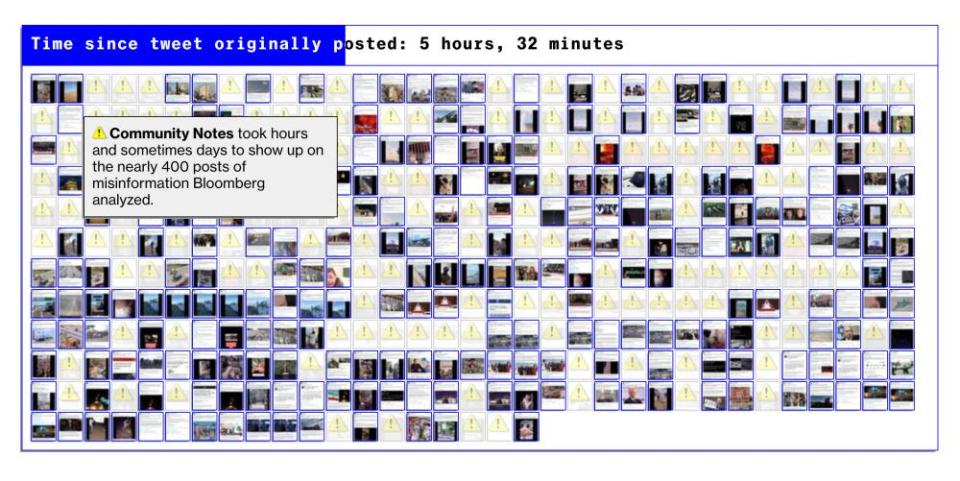The Crunch: the rise of SUVs; young people feel cost-of-living bite; and a spotlight on global heating and Cop28
Welcome to the first edition of The Crunch! This is a new fortnightly newsletter which focuses on the best data journalism and data visualisation from the Guardian and around the web.
While we’ll be including a lot of Australian content (as both authors are based in Australia), we’ll also be featuring work from our UK- and US-based colleagues and dataviz of general, international interest.
In this week’s newsletter, we’ve got data on romance novel covers getting less raunchy, how younger people are bucking political trends, a round-up of visual journalism on Cop28 and the climate crisis, a look at how many Palestinians have been displaced due to the Israel-Palestine war and an excellent interactive graphic showing how X (formerly Twitter) is slow to act on misinformation posted to the platform.
But first, in the inaugural video episode of The Crunch …
… we dive into the data on how SUVs are taking over our roads and what that does for safety and emissions.
This is the first episode of our new podcast-on-video-style show (vodcast?! podeo?!?!), where we use our noisycharts software to turn a key chart on a topic into audio and video, which we then play and discuss with a guest. Making the charts in this format makes them more accessible for vision-impaired people and means the data visualisation can be represented in audio and video. Please let us know what you think!
Four charts from the past fortnight
***
1. The cost of delay on global heating
The 2023 United Nations Climate Change Conference, or Cop28, begins this week. Here, Jeff Tollefson at Nature has produced an excellent series of graphics which show how the world’s continued delay to significant cuts in emissions has led to requiring far more severe cuts, with a steeper trajectory to net zero. We’ve also got a special round-up on climate-related graphics ahead of Cop28 below.
***
2. Younger people are feeling the sting of the rising cost of living
This chart has been widely shared on social media after the Commonwealth Bank’s latest cost of living insights report showed people of different ages are experiencing the increased cost of living in different ways.
The bank’s analysis of transaction data shows that younger people are cutting back on spending compared to the same time last year, even on essential items, while older people’s spending continues to increase (though it hasn’t increased as much as inflation over the same period for most older age groups).
***
3. Younger people are also becoming more left-leaning, politically, unlike older generations
It’s often said that people tend to become more politically conservative as they age. But millennials and generation Z are bucking the trend – supporting the Indigenous voice to parliament and backing centre-left and left parties at increasing rates in recent elections.
Political scientists say there has been a “fundamental shift”, at least partly because the experiences of younger voters are so much different from previous generations.
This chart, based on research by Dr Shaun Ratcliff and using data from the Australian Election Study, shows younger people are turning away from the conservative side of politics.
***
4. Nearly four in five residents in Gaza have fled their homes
This chart shows the breakdown of displaced people by region, with the highest numbers in Rafah, near the border.
The UN estimates 1.8 million people in Gaza have fled their homes – nearly four in five residents – with children making up half of those crowded into shelters, given shelter by relatives, or living in tents or cars. Gaza is not getting enough aid to meet even basic emergency needs, the UN has warned, and the population is so ravaged by hunger, bombing and the lack of clean water that deaths from disease could outstrip those from war.
***
5. X (aka Twitter) is slow to act on misinformation about Israel and Palestine

This excellent interactive graphic and investigation by Bloomberg shows how long it takes for misinformation posted to X (formerly Twitter) to be addressed using the website’s community notes system.
Spotlight on … Cop28 and global heating
This visual feature from Nadja Popvich at the NYT charts the change in electricity production by country. It clearly shows which countries are increasing their renewable share, and which ones still rely heavily on fossil fuels.
Australia’s latest emissions data is due to be released just as Cop28 begins, and Guardian Australia will have the latest figures added to our emissions tracking page this afternoon, along with new global data showing how we compare to other countries.
This next one is not a chart, but a table, the most useful and underrated format in the field of data visualisation and analysis. Carbon Brief is tracking what each country or group of countries want from the Cop28 summit, which measures they support, and which they oppose.
A new feature from our UK colleagues charts deforestation around the world, and looks at solutions for the continued destruction of nature due to the climate crisis, invasive species, overexploitation of resources and pollution
Off the Charts
The stereotypical romance novel cover of a scantily clad man and woman may have actually just been a blip – they are overwhelmingly from the 1970s and 80s. This deep dive from the Pudding (we love the Pudding) found that covers from before this era featured other themes, such as travel. And more recently the level of “raunch” has declined, replaced by more pop art covers and racial diversity.
Sign up
If you would like to receive The Crunch to your email inbox every fortnight, sign up here.

 Yahoo News
Yahoo News 
